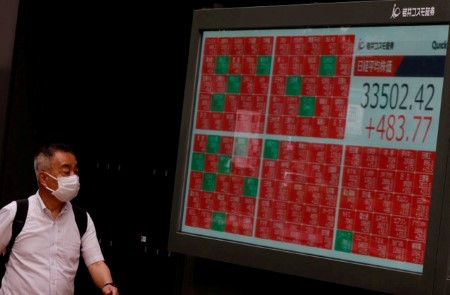




Policy Rate Updates: Double cut finale
 DOWNLOAD
DOWNLOAD

Monthly Economic Update: One for the road
 DOWNLOAD
DOWNLOAD

Inflation Update: Still low, still slow
 DOWNLOAD
DOWNLOAD


Data deluge could douse fiery start to week

Nov 7 – Tuesday will be one of the busiest days of the year for Asian markets in terms of top-tier regional economic data and events, and investors could not be going into it on a stronger footing.
Asian and emerging market stocks rose more than 2% on Monday, bringing their gains over the last three trading sessions up to almost 6%.
This is their best run in a year, powered by easing financial conditions in the form of lower US bond yields and a weaker dollar, and renewed faith in the US economic ‘soft landing’ scenario.
Aggregate financial conditions across emerging markets and in China have slumped in recent days to their loosest in nearly two months, or in the case of India, the easiest in three months, Goldman Sachs financial conditions indices show.
South Korean shares got an added injection of rocket fuel on Monday, surging 5.7% in their biggest leap since early 2020 after authorities re-imposed a ban on short-selling through the first half of 2024 to promote a “level playing field”.
Having under-performed global and developed market benchmarks last week, Asian stocks could be set to outperform this week. That is how markets played out on Monday, as the MSCI World Index and Wall Street eked out gains of no more than 0.3%.
That may temper some of the bullishness across Asia on Tuesday, however, and there is certainly no shortage of event risk to keep investors and traders on their toes.
Australia’s central bank is expected to raise its benchmark cash rate by 25 basis points to 4.35%, the highest since 2011, and breaking a run of four meetings on hold. Sticky inflation is keeping a hawkish bias in Aussie money markets, which are pricing in at least one more quarter-point hike next year.
Also on Tuesday, the Bank of Korea publishes the minutes from its last policy meeting, while on the data front consumer inflation figures from Taiwan and the Philippines, trade data from Taiwan, industrial production figures from Indonesia, and household spending figures from Japan are all on tap.
The big one, however, could be China’s trade report for October. Steep year-on-year declines in imports and exports for most of this year – especially imports – have been a pretty good barometer of the overall economy’s underlying weakness.
But a trough looks to have been reached, the trend is improving, and the economy grew faster than expected in the third quarter. China bulls will be hoping for more encouraging signs.
Skeptical foreign investors will need more than one month of slowing imports and exports decline though. Figures on Monday showed that China recorded its first-ever quarterly deficit in foreign direct investment (FDI) since China’s foreign exchange regulator began compiling the data in 1998.
Here are key developments that could provide more direction to markets on Tuesday:
– Australia central bank policy meeting
– China trade (October)
– Japan household spending (September)
(By Jamie McGeever; Editing by Deepa Babington)
This article originally appeared on reuters.com





 By Reuters
By Reuters